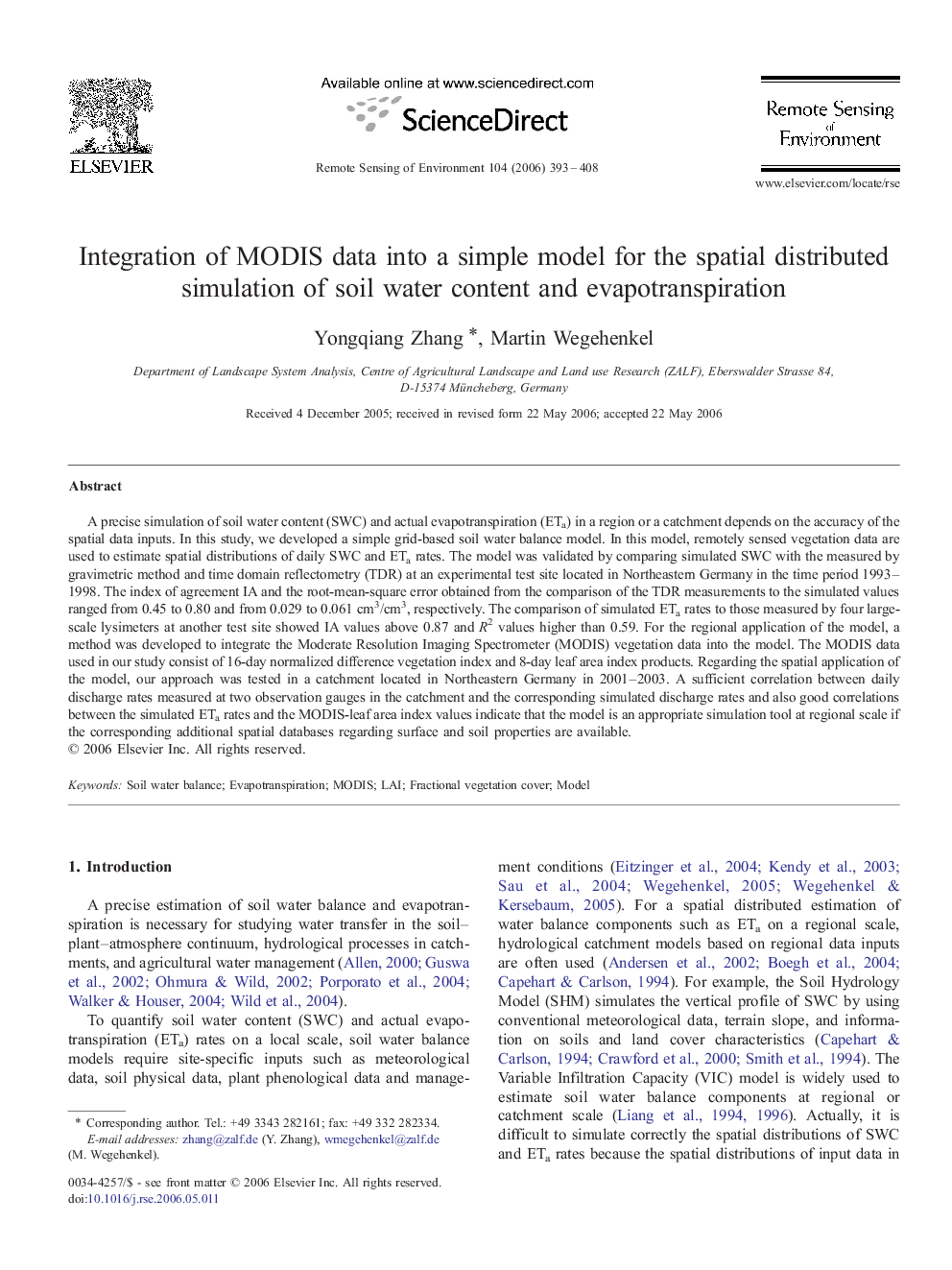| Article ID | Journal | Published Year | Pages | File Type |
|---|---|---|---|---|
| 4461059 | Remote Sensing of Environment | 2006 | 16 Pages |
A precise simulation of soil water content (SWC) and actual evapotranspiration (ETa) in a region or a catchment depends on the accuracy of the spatial data inputs. In this study, we developed a simple grid-based soil water balance model. In this model, remotely sensed vegetation data are used to estimate spatial distributions of daily SWC and ETa rates. The model was validated by comparing simulated SWC with the measured by gravimetric method and time domain reflectometry (TDR) at an experimental test site located in Northeastern Germany in the time period 1993–1998. The index of agreement IA and the root-mean-square error obtained from the comparison of the TDR measurements to the simulated values ranged from 0.45 to 0.80 and from 0.029 to 0.061 cm3/cm3, respectively. The comparison of simulated ETa rates to those measured by four large-scale lysimeters at another test site showed IA values above 0.87 and R2 values higher than 0.59. For the regional application of the model, a method was developed to integrate the Moderate Resolution Imaging Spectrometer (MODIS) vegetation data into the model. The MODIS data used in our study consist of 16-day normalized difference vegetation index and 8-day leaf area index products. Regarding the spatial application of the model, our approach was tested in a catchment located in Northeastern Germany in 2001–2003. A sufficient correlation between daily discharge rates measured at two observation gauges in the catchment and the corresponding simulated discharge rates and also good correlations between the simulated ETa rates and the MODIS-leaf area index values indicate that the model is an appropriate simulation tool at regional scale if the corresponding additional spatial databases regarding surface and soil properties are available.
